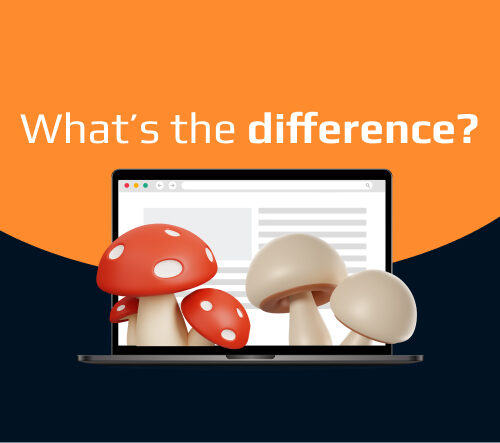Picture a reality where our daily news harbours more than meets the eye. A reality rife with hidden motives and inaccuracies. Far from being a mere work of fiction, this represents a tangible challenge in our world of digital interconnectivity.
The spread of disinformation could have devastating effects, influencing our society, shaping political views, and altering what we believe to be true.
There’s an old saying, “A lie can travel halfway around the world while the truth is still putting on its shoes.” highlighting the rapid spread of misinformation in our modern world.
But there’s good news – Sensika has been at the forefront of this battle for years. With artificial intelligence tools and advanced technology, we are not just observing this phenomenon. We are actively turning the tide to ensure the truth gets a head start.
Recognizing the challenges posed by this complex web of misinformation, Sensika steps in with solutions tailored to navigate and clarify this landscape.
Table of contents
Understanding the Disinformation Challenge
In the rapidly evolving digital world, the sheer volume of information presents a significant challenge in discerning reliable content. Sensika contributes to this environment with its global reach, covering over 200 countries and supporting more than 150 languages.
Our platform integrates advanced AI and ML models, which are essential in monitoring and analyzing a broad spectrum of media. This integration helps in distinguishing disinformation amidst the vast array of information.
What exactly makes disinformation such a tricky problem? Often presenting itself not just as outright falsehoods but take on more subtle forms. Stories with elements of truth, yet misleading in a certain way or leaving out significant facts.
Sensika’s approach involves understanding the complexity of how disinformation spreads. We focus on identifying the nuances of these deceptive narratives and exploring ways to mitigate their impact. It’s about gaining insight into the strategies behind disinformation to develop methods that effectively address and counter it. Contributing as a result to a clearer understanding of the truth in our information-rich world.
Decoding Disinformation
Sensika tackles the disinformation problem with a unique strategy we call the ‘Disinformation Pyramid Framework’. This approach helps us understand and categorize the sources of false information into three levels:
Tier 1: International Media and Newswires
These are often big players in the media world, sometimes responsible for spreading complex and well-crafted propaganda.
Tier 2: Regional Media Outlets
These sources mix accurate news with misleading information, creating a blend that can be confusing for readers.
Tier 3: ‘Mushroom’ Websites and Blogs
Known for spreading false information and conspiracy theories, these are typically the starting points of disinformation.
Let’s focus on Tier 3, where it all begins. False stories are often created and pushed out widely using automated methods. Bots and trolls play a vital role, using online algorithms to make these stories seem more popular and widespread than they are.
This process breaks down into four stages:
Seeding/Implantation
Tier 3 sites create and start spreading false stories.
Targeted Distribution for Artificial Amplification
Here, automated bots and trolls help to spread these stories across social media and other platforms. Tricking algorithms and making the content seem popular.
Organic Amplification
At this stage, active social media users start to see and share these stories, not realizing they are false.
Viral Spread
False information becomes widespread across various media platforms and is shared by users who believe it’s true. As these stories gain popularity, they increasingly appear credible, creating the impression that they are viral news.
Sensika’s technology spots these early signs of false stories – what we call ‘weak signals’ – and tracks their spread from these Tier 3 sites to the mainstream.
Building on our understanding of disinformation sources, let’s look at some of the tools and methods we use to fight them.
A Closer Look at Sensika’s Approach
To effectively combat disinformation, Sensika relies on a multi-layered, strategic approach anchored by three pivotal questions:
- What are the primary narratives in play during intense propaganda campaigns?
- How extensive is the spread of harmful or misleading content?
- Which sources act as the principal amplifiers of these narratives, possibly forming influence networks?
To find answers, we use a variety of techniques:
HTML Forensics: This technique is like digital detective work, where we delve into the coding structure of websites. By analyzing HTML codes, we can uncover hidden connections between sites that may seem unrelated but are part of coordinated disinformation networks. We meticulously examine HTML structures to detect subtle similarities, revealing the interlinked web of websites propagating similar stories or misinformation.
Multilingual Topic Clustering: Understanding that disinformation knows no borders. This process involves clustering media posts discussing similar topics from various languages. We can observe how certain narratives or themes gain traction globally. Our platform then synthesizes these findings by providing a concise summary of each narrative cluster, thus enabling efficient analysis of widespread disinformation trends.
Stylometric Analysis: Here, we focus on the linguistic patterns within posts. Our objective is to identify language that aims to persuade or manipulate emotions. By analyzing the style and structure of the text, including factors like loaded language, name-calling, or the creation of doubt, we can ascertain the emotional impact of content. This analysis conducted down to the sentence level, equips us with insights into how disinformation campaigns might seek to influence public opinion.
By integrating these sophisticated techniques, Sensika is adept at unravelling the complex fabric of disinformation, tracking its roots, and understanding its proliferation. Our comprehensive methodology is key in our relentless pursuit to counteract the tide of misinformation.
Workflow Example: How Sensika Streamlines Media Monitoring
As with every media monitoring tool, you start by building a ‘query’. It’s a set of keywords related to your area of interest. Once you input these keywords, your platform shows content related to them.
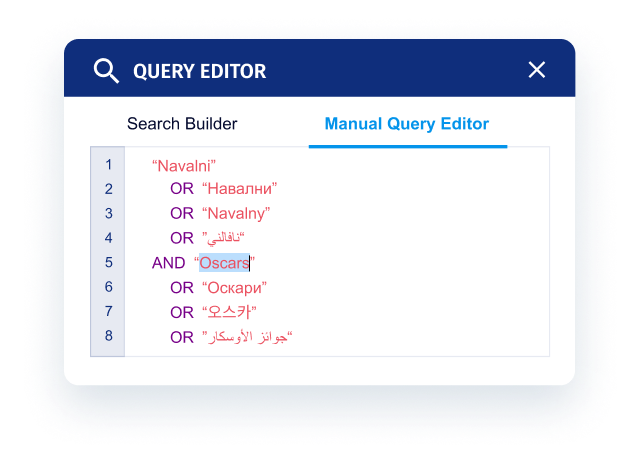
Keyword Expander Tool
We understand that developing a complex query can be challenging, especially if you monitor in multiple languages. To make this simpler, we built the “Keyword Expander” tool. Think of it as a brainstorming partner. You start with a few words, and it suggests additional, related keywords to make your search more thorough and accurate. The tool is practical because it can also translate your keywords into other languages and consider different forms for each word – a helpful feature for languages with complex structures like Arabic.
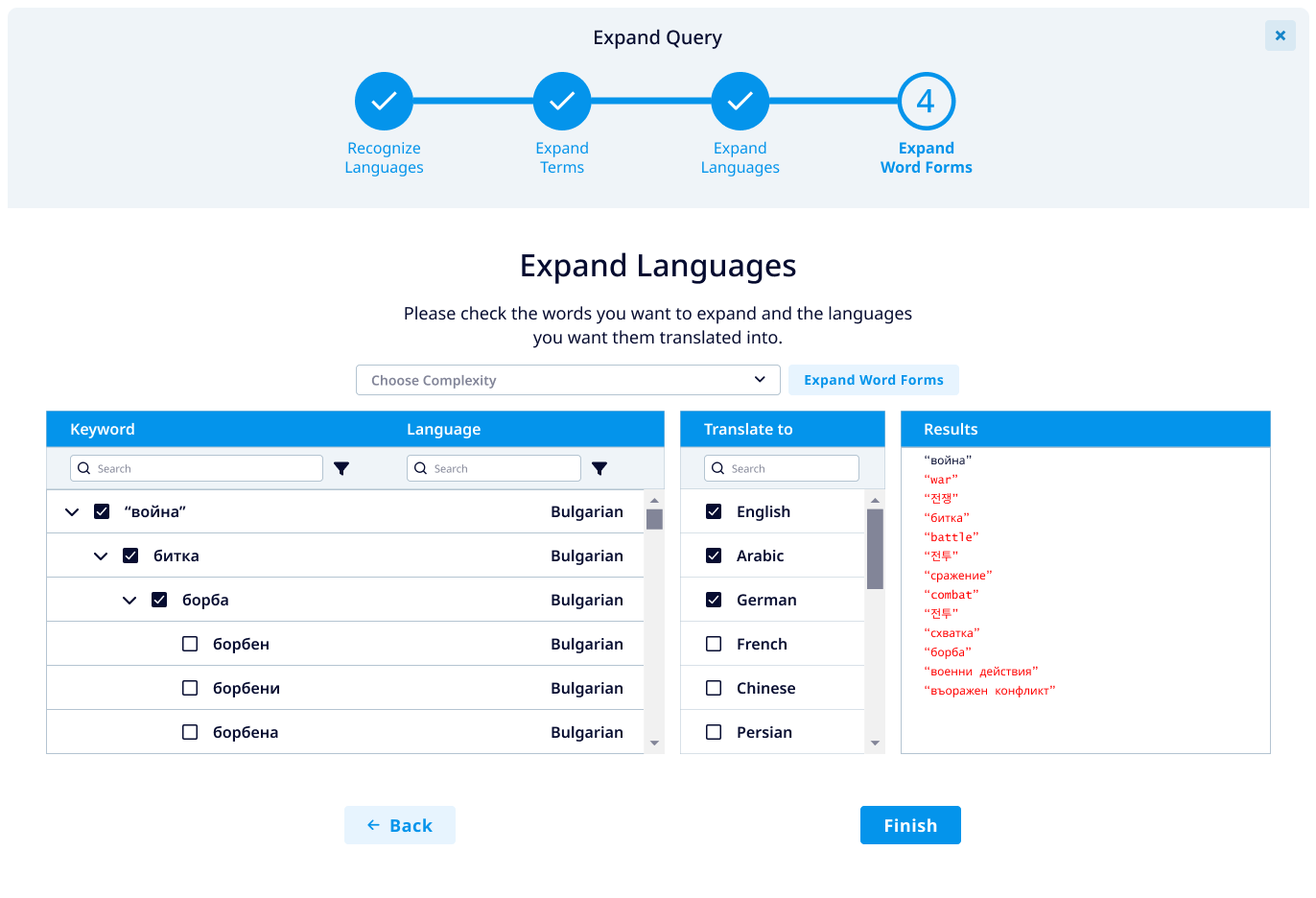
Once you have your set of keywords, the platform displays the gathered content. You’ll see the articles or posts you’re monitoring on one side. On the other, there are various tools we call ‘widgets’ that help visualize this content. These widgets make it easier to dive deep into the data for detailed analysis.
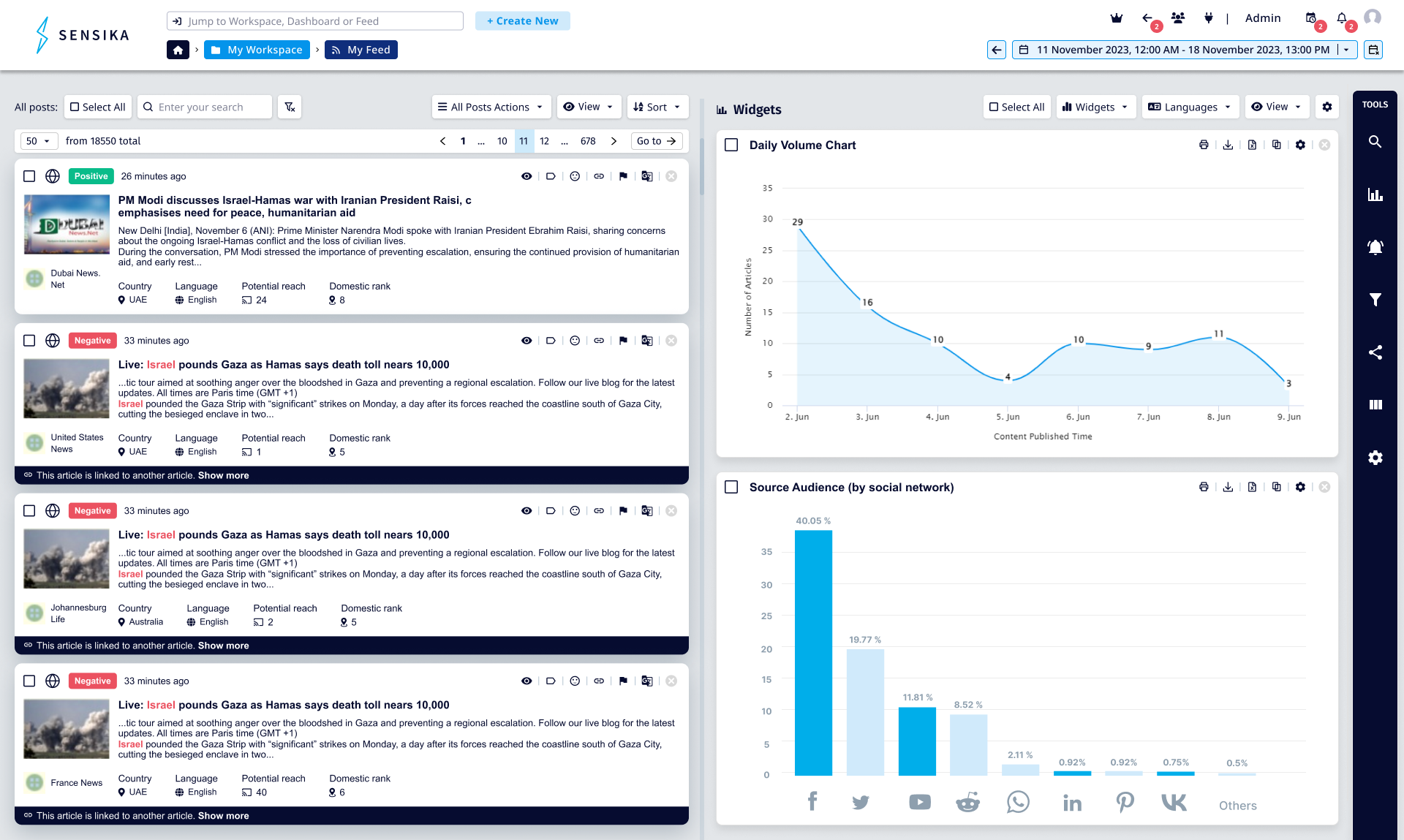
Dive Deeper
To further refine your search, volume charts are the best place to start. These can show the sheer amount of content related to your search or more specific aspects like sentiment or how many mentions certain entities have. These charts help you spot trends or surges, making it easier to zoom in on the most relevant or influential information.
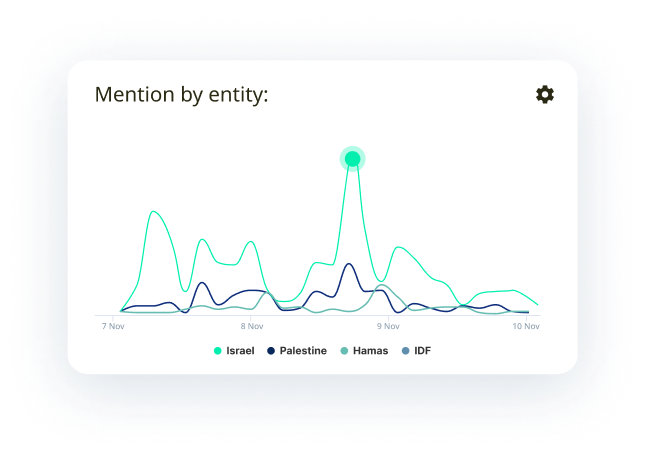
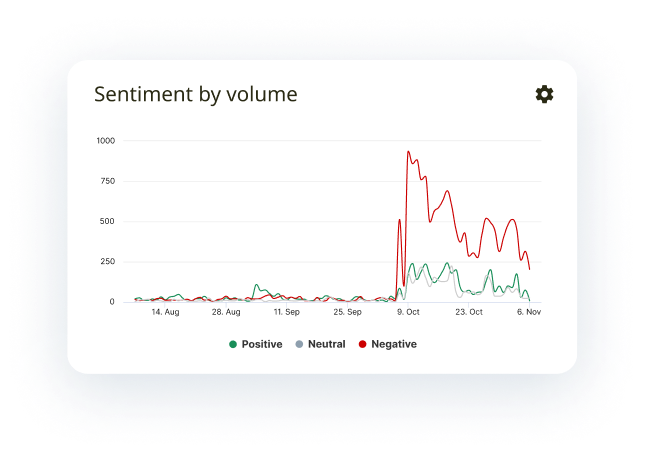
After selecting a peak or trend you want to explore, you can use our multilingual content clustering feature. It will automatically group content covering the same story or topic, even if it’s in different languages. Following this, our Auto-Synopsis feature summarizes these clusters in your preferred language through language learning models (LLMs).
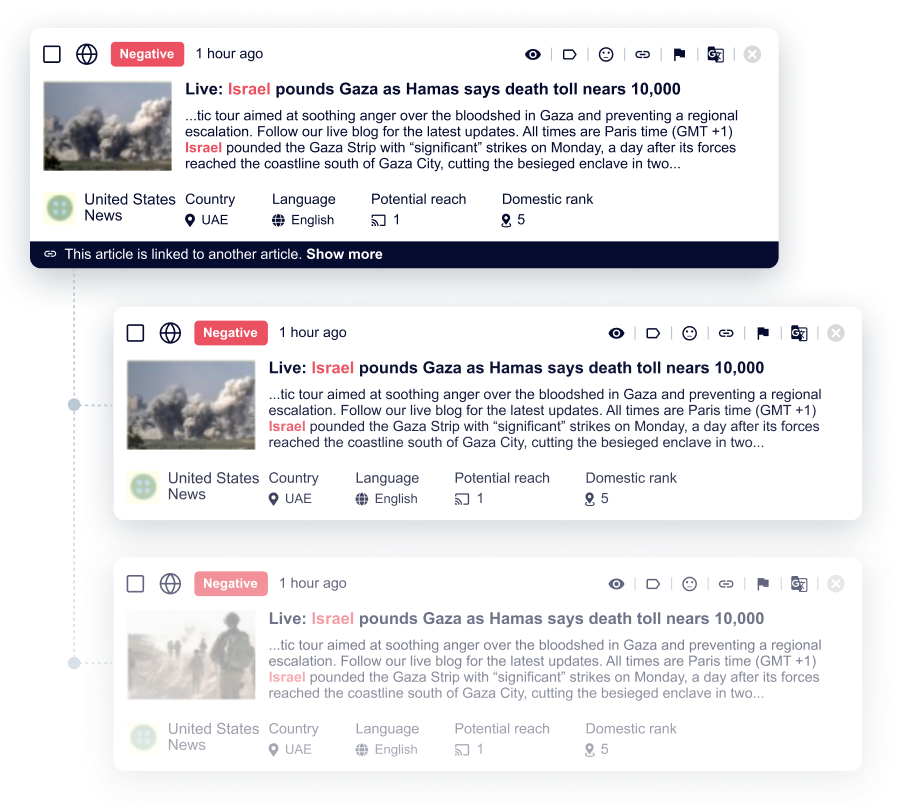
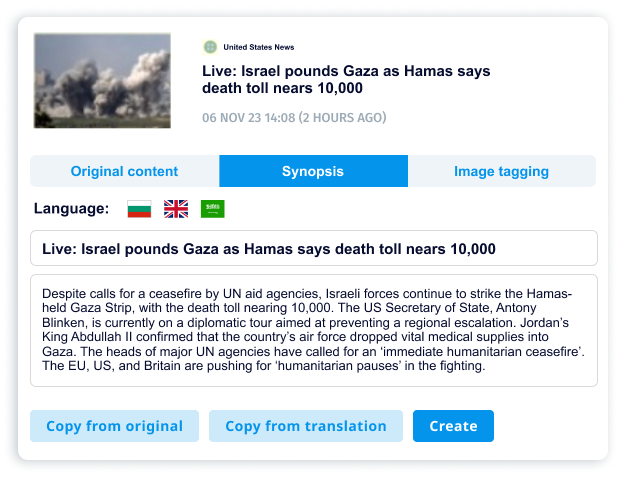
To delve even deeper, you might want to analyze the tone or emotion of the content. Our platform allows you to filter headlines and posts based on their likelihood of containing emotionally charged or persuasive language.
Moreover, you can use our pre-configured widgets to identify the most influential sources. These include top sources by volume and a bar chart showing source clusters based on HTML analysis.
For instance, in a scenario where you’re analyzing coverage about Palestine, you will find that sources fall into distinct clusters such as Shafaqna, News.net, and Big News.
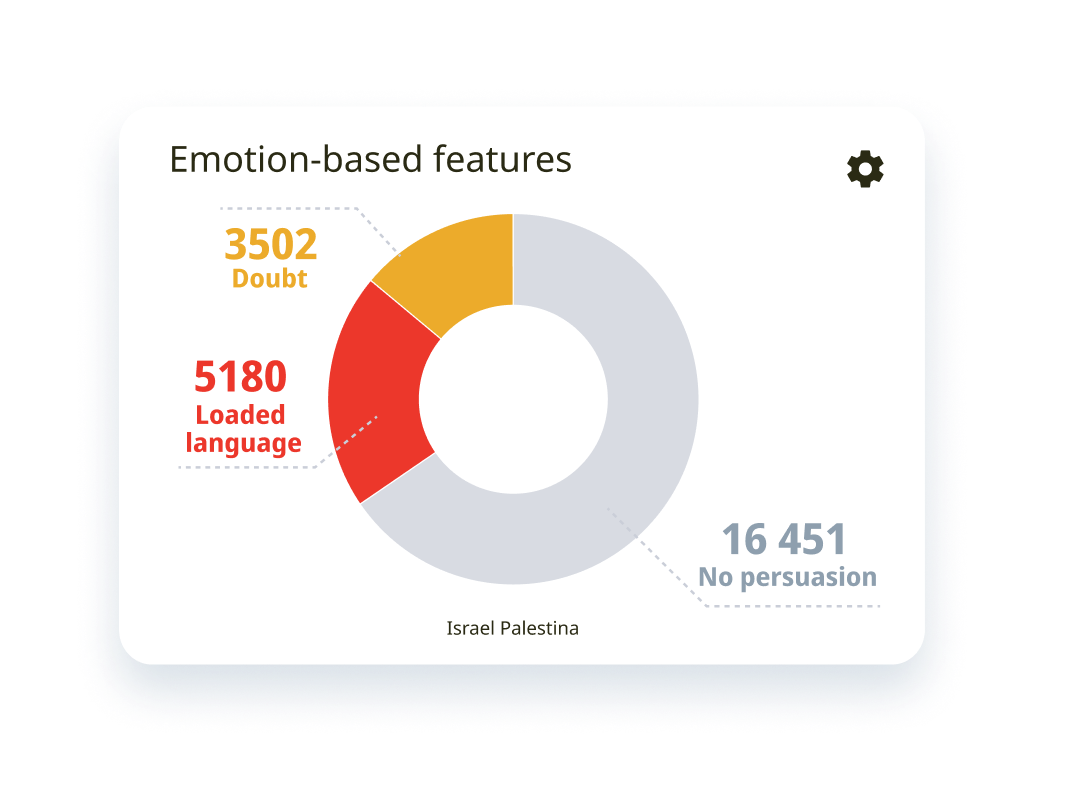

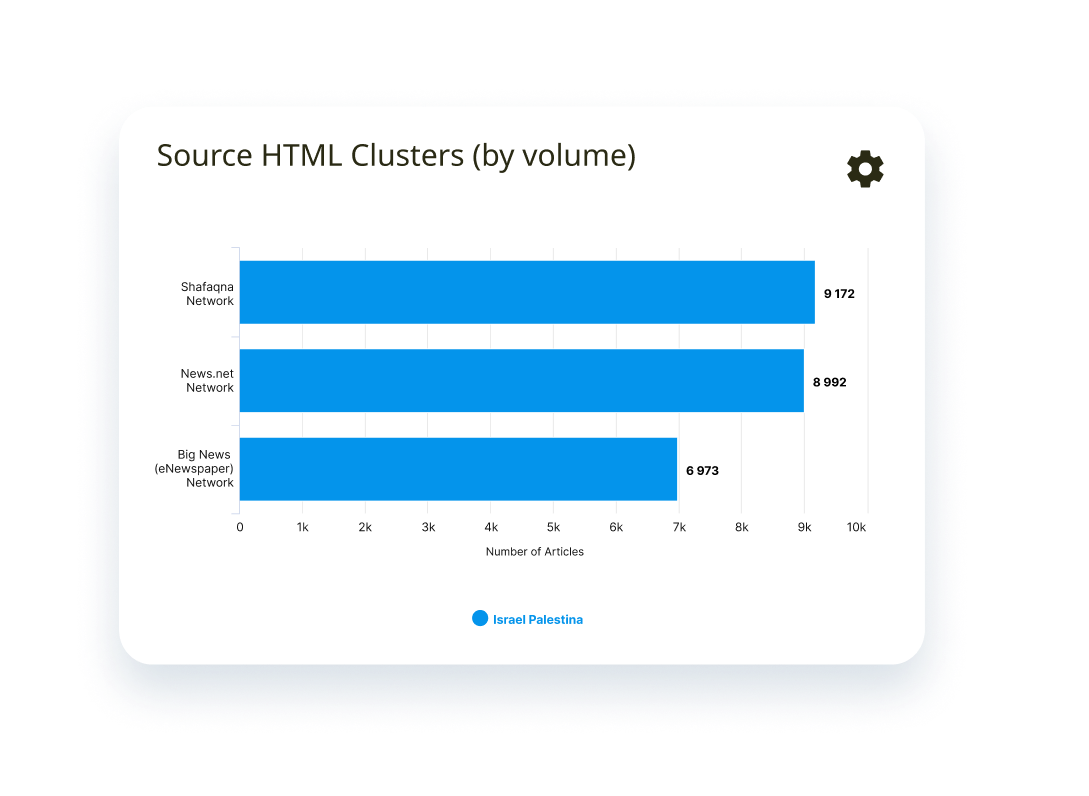
Demonstrating Impact Through Real-World Case Studies
For a better glimpse of Sensika’s technological capabilities, let’s look at how it works in real situations:
Monitoring Russian Propaganda During the Ukrainian Conflict
This project highlights Sensika’s ability to delve into complex geopolitical issues. We focused on tracking and analyzing the narratives and tactics used in Russian propaganda related to the Ukrainian conflict. Our analysis offered deep insights into how state-backed disinformation campaigns operate, shedding light on their strategies and objectives. This case study demonstrates Sensika’s prowess in handling large-scale, politically sensitive information. It also underscores our contribution to understanding and dismantling state-sponsored disinformation. Read the CSD’s full report.
Collaboration with The Basel Institute on Bulgarian Media
In this significant project, we worked with The Basel Institute to investigate disinformation networks within Bulgarian media. Our efforts revealed the intricate mechanisms of localized disinformation campaigns, demonstrating how misinformation is often specifically tailored to target individual regions and communities. This case study is a testament to Sensika’s ability to navigate the complexities of regional disinformation and provide clear, actionable insights. For more about our findings, check out the Basel Institute report.
The impact of Sensika’s technology, as these case studies prove, leads us to an undeniable conclusion about the role of media monitoring in today’s world.
Conclusion: Steering Towards a Future Guided by Truth
Disinformation can influence public opinion, disrupt democratic processes, and impact global events. For that reason, the need for platforms like Sensika has never been greater. Standing up for truth and accuracy is crucial.
At Sensika, we’re well aware of the challenges involved in tracking and analyzing disinformation. Our work involves more than identifying misleading content. It’s about uncovering networks of influence and revealing hidden stories within a vast sea of information.
When we combine our advanced technology with the insights of human experts, we can develop varied approaches to address these challenges, ensuring we tackle disinformation effectively and accurately.
Our efforts have one goal: To protect and promote truth and transparency.
You can play your part in this mission by keeping up-to-date with developments in media monitoring and contributing to a landscape rooted in truthful, reliable information.
Together, we can create a future where truth overthrows falsehood and informed understanding defeats ignorance.

